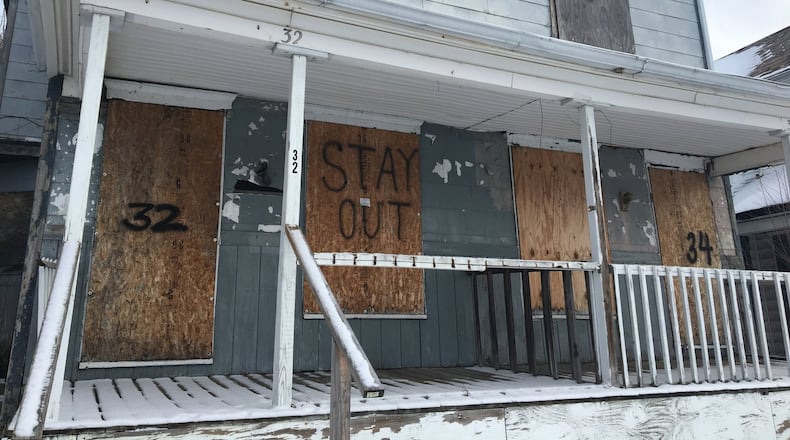“There’s this long tale of distress,” Blomquist said, referring to lingering economic problems in some areas. “It’s still reeling many markets in Ohio.”
The Miami Valley is one of those markets. The Dayton metropolitan area ranks 31st highest out of 216 U.S. metro areas in 2016 for foreclosure activity, according to ATTOM Data Solutions. Cleveland was No. 20, and Akron was 26.
In December 2016, the foreclosure action-to-housing-unit ratio was one in every 824 housing units in Montgomery County, which puts the county among the five highest county foreclosure rates in the state, according to ATTOM. Statewide, Ohio saw foreclosure actions on one of every 1,292 housing units.
Mekael Teshome, PNC economist and assistant vice president, said housing markets in Dayton and Southwestern Ohio may not be “at full strength yet.”
“It’s been a bumpy recovery for Ohio and for the Dayton area especially,” Teshome said. “The pace of growth has not been as strong as nationwide, and as a result, the recovery in the housing market is not going to be as strong as well.”
Teshome expects wages and job growth to improve at least somewhat in the coming year.
“As we look forward, we are moving in the right direction,” Teshome said.
Overall, the region has come a long way since the Great Recession.
Bill Staler, chief executive of Hamilton-based nonprofit LifeSpan Inc., which offers financial counseling services, said housing values are up and fewer homeowners are “underwater” on their mortgages, meaning they don’t owe more than their homes are worth.
“We have seen an improvement,” he said. “We certainly think the housing market is a lot stronger.”
“I know our housing-counseling appointments are down substantially from where they were three, four years ago,” he added.
People who approach LifeSpan for help run the gamut from those who can’t make monthly payments to those who have seen a sheriff’s deputy slap a foreclosure notice on their door.
“Generally speaking, the real estate market is the strongest it’s been since the recession,” said Karen O’Grady, a sales agent with Coldwell Banker Heritage Realtors and president of the Dayton Area Board of Realtors
Michael Martin, past president of the Dayton Area Board of Realtors, said because prices locally are so “reasonable,” out-of-town and local investors often buy foreclosed homes or homes available in other ways, beyond foreclosure.
“The average sale prices and median sales prices are so good, they do attract investment from outside the region and inside the region, as well,” Martin said.
Lisa Smedley, president of the Springfield Board of Realtors, said foreclosures in her area are down significantly. In 2009, about 1,000 properties were submitted to the Clark County Sheriff’s Office for a sheriff’s sale, she said. In 2015, the number was down to 340. Sheriff sale filings in 2016 rose to 428, she said.
Smedley said people didn’t necessarily lose their homes because foreclosure activity was initiated. And she believes many owners are finding resources to help them hold on to their homes.
“Housing values are up,” Smedley said. “I could work seven days a week. I only stop working because I’m tired.”
ATTOM Data Solutions reported that 933,045 U.S. properties were foreclosed in 2016, down 14 percent from 2015 to the lowest foreclosure level since just before the Great Recession, in 2006. In 2006, 717,522 U.S. properties were subject to foreclosure filings, the report said.
Nationally, 55 percent of all loans in foreclosure at the end of 2016 were originated between 2004 and 2008, the report said.
About the Author

